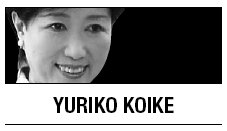TOKYO ― On Dec. 17, North Korea announced that its supreme “Dear Leader,” Kim Jong-il, had died in a train carrying him on one of the many inspection tours that he had taken since suffering a stroke in 2008 ― evidently part of the regime’s effort to eliminate concerns about his health. The Dear Leader’s death triggered a hereditary transfer of power, with the world’s attention focused not only on Kim Jong-il’s son and chosen successor, Kim Jong-un, but also on who will actually turn out to be the country’s true leader.

Although Kim Jong-il received his reign from his own father, North Korea’s founder, Kim Il-sung, history suggests that a clean transfer from father to son is the exception rather than the rule. In the 13th century, Minamoto Sanetomo became the third shogun of Japan of the Kamakura Period, thus placing him at the top of samurai society at the age of 12. Actual power, however, was wielded by Hojo Masako, the first shogun’s daughter-in-law, and other members of the Hojo clan, including her father, Hojo Tokimasa. Sanetomo was simply too young and inexperienced to lead the samurai.
For the samurai, combat experience and age were decisive legitimating factors. Professional samurai would be disgruntled if given orders by a young person with no actual combat experience. It was this value system that created an opening for the Hojo clan.
Chinese history tells us something similar. The regent of the Guangxu Emperor, who became the 11th emperor of the Qing Dynasty at the age of three, was the Empress Dowager Cixi. Until he died in 1908, the emperor was Cixi’s puppet.
Both of these examples of government by regency may shed light on the succession struggle now underway in Pyongyang. At 28 (or 29, as Koreans count age), Kim Jong-un is a pudgy young man with no combat experience whatsoever. So there are substantial doubts as to whether the aging commanders of North Korea’s army, many of whom fought in the Korean War six decades ago, can swear loyalty to a callow, paper general.
This helps to explain why North Korean propaganda covered up the true cause of Kim Jong-il’s death ― cancer, not a heart attack. Indeed, he had become so ill recently that he could not make decisions by himself near the end, so his only full-blood relative, his sister Kim Kyong-hui, made decisions on his behalf. In other words, even before Kim Jong-il’s death, a dual structure of supreme power had begun to take hold in Pyongyang.
For example, Jang Sung-taek, the director of the Administration Department of the Workers’ Party of Korea and Kim Kyong-hui’s husband, has gained much attention since Kim Jong-il’s death. On the list of 232 funeral committee members, Kim Jong-un was listed first, Kyong-hui 14th, and Jang Sung-taek 19th.
In September 2010, Kyong-hui was made a general in the North Korean People’s Army, alongside Kim Jong-un. She is also a member of the Political Bureau of the Workers’ Party of North Korea. Her husband received the position of vice chairman of the National Defense Commission, and also remains a candidate for Political Bureau membership.
Kim Kyong-hui is the 65-year-old daughter of Kim Il-sung and Kim Jong-suk. Her mother died when she was 4. She was subsequently raised by various nannies, and grew to have a stern personality, owing to her complex relations with her stepmother and half-siblings. She frequently caused trouble for her brother, Kim Jong-il, who apparently once let slip that, “Nobody can stop my sister if she acts up. Not even I can do anything about it.”
Even if Kim Jong-il’s successor is outwardly portrayed as being Kim Jong-un, the actual power is likely to be transferred to Kim Kyong-hui, who is known for being jealous and having a strong love of winning. Indeed, to revert to the Japanese and Chinese precedents, it should be recalled that Sanetomo was later assassinated and Hojo took power, ending the effective control of the Kamakura Shogunate, and that the Xinhai Revolution brought about the end of the Qing Dynasty three years after the Empress Dowager’s death.
Of course, 21st century North Korea is not Japan of the Kamakura Period or China during the Qing Dynasty, but, while history never repeats itself exactly, such comparisons can be instructive. Indeed, although the Kims have reduced North Korea’s economy to a practically medieval state of backwardness, Internet access and mobile phones are becoming more widespread. A million mobile phones are already being used in the country, and it is now possible to evade the regime’s draconian information controls and censorship by exchanging information near the borders. Reliable information is conveyed into North Korea by the use of balloons to spread leaflets.
The Japanese and Chinese precedents will become increasingly relevant if these trends continue. In that case, a North Korean revolution might not be far off, particularly if relations between the country’s aged generals and the Kim dynasty begin to fray.
By Yuriko Koike
Yuriko Koike is Japan’s former minister of defense and national security adviser. ― Ed.
(Project Syndicate)





![[Herald Interview] 'Trump will use tariffs as first line of defense for American manufacturing'](http://res.heraldm.com/phpwas/restmb_idxmake.php?idx=644&simg=/content/image/2024/11/26/20241126050017_0.jpg)


